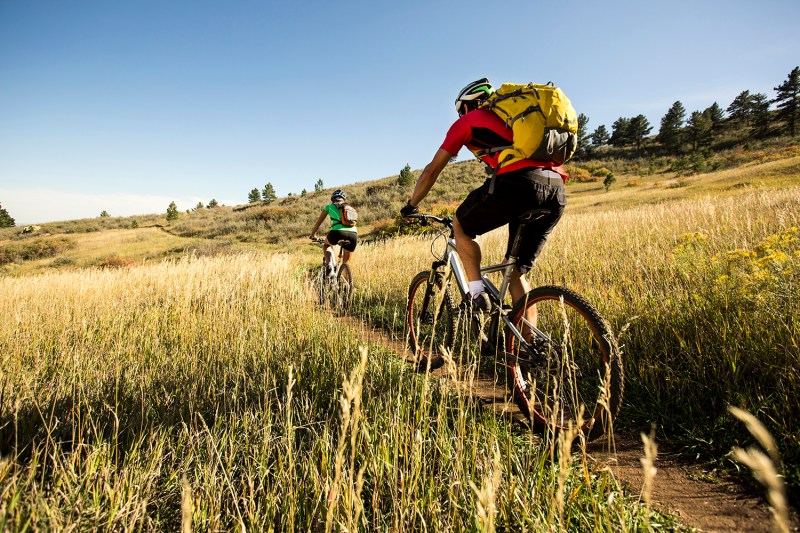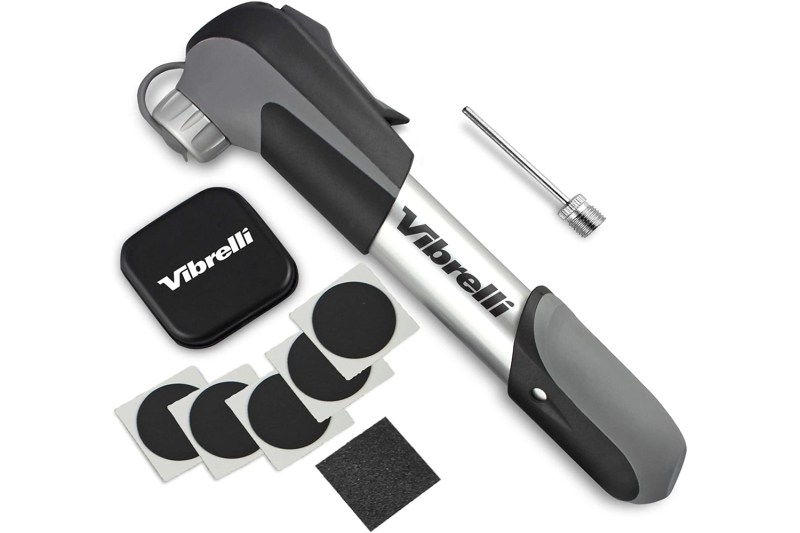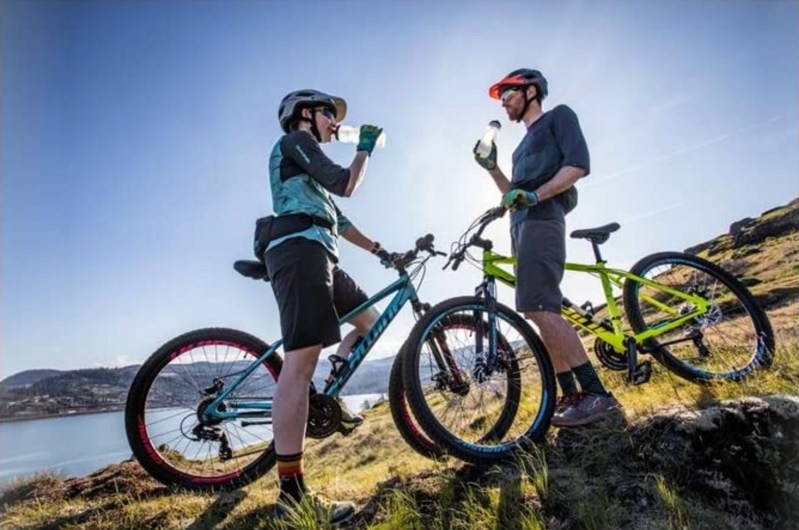
We often make sure our mountain bike is in good running condition before a ride, but checking the bike gear we bring along can often slip our minds. Think of this as a checklist of sorts, so you’re ready for your next mountain biking adventure!
Mountain biking safety
Safety should be the number one priority when considering bike gear. At the bare minimum, you should wear a quality helmet when you are on the bike. Helmet manufacturers consider the features found on mountain bike trails when designing their helmets, so choosing a mountain bike-specific helmet is important. Consider buying a helmet with MIPS technology. MIPS helps reduce rotational force if your head hits the ground during a crash. With more and more helmets incorporating the technology, it’s clear engineers are doing something right.
Mountain bike trails can get especially dusty. Mountain bike eyewear may turn your ride from miserable to awesome. Many companies have interchangeable lenses, keeping your eyes free of dirt and dust, regardless of how sunny it is. Cuts and gashes can be frequent while mountain biking, so making sure you have a proper first-aid kit is a must. A kit designed specifically for adventure will be your best bet, as it will have everything you need at a minimal weight.

Tire repair kit
Mountain bike trails and flat tires seem to go hand in hand. A flat is the most common mechanical issue you are likely to encounter, so having a kit in your bike gear is a necessity. At a minimum, make sure your tire repair kit has a hand pump and tire levers. Different kits come with various items, but these two are essential.
The mountain bike of today is likely tubeless, but a tubeless trail-side fix can be tricky. Having a spare tube that fits your tires will ensure you’ll keep riding, rather than walking back to your car. While you grab a spare tube, pick up a tire repair kit that has all the tools you need to actually change a tire, even out on the mountain bike trails.

Hydration and energy
Lastly, make sure you stay hydrated and fueled. Before you head out, you can easily make some high-energy, low-waste, and low-cost snacks at home that will help keep you spinning your wheels. Snacks like granola bars and even squeezable peanut butter pouches are good options. They are relatively small, won’t make a mess in your bag, and pack lots of energy.
Bringing water mountain biking seems like a no-brainer, but water may not be enough. We lose sodium, magnesium, and potassium through our sweat when are mountain biking. Add an electrolyte mix to a water bottle to replenish what you will lose.
Pack all the loose bike gear in a mountain bike hip pack, and you’ll be ready to confidently and comfortably hit the trails. Mountain biking is a blast, but like many outdoor activities, being unprepared can spoil the time. There’s a chance you may never use any of this bike gear (well, you’ll use the water and snacks for sure). But considering you may be 10 miles away from your car on a mountain bike trail, it’s better to have the gear and not need it than to need it and not have it.



